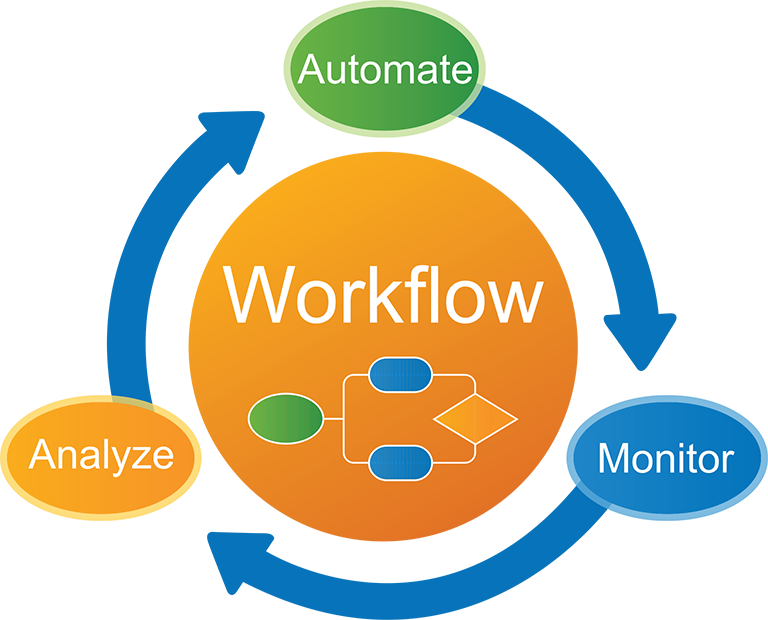In today’s fast-paced business environment, efficiency and productivity are paramount. Workflow automation is a powerful tool that can streamline operations, reduce manual effort, and improve overall productivity. This comprehensive guide explores the benefits of workflow automation, the key areas where it can be implemented, and the best practices for success.
What is Workflow Automation?
Workflow automation involves the use of technology to automate repeatable business processes. It allows tasks to be performed with minimal human intervention by leveraging software and tools to create automated workflows. These workflows can manage various functions, from simple repetitive tasks to complex processes that involve multiple steps and systems.
Benefits of Workflow Automation
- Increased Efficiency: Automating routine tasks frees up time for employees to focus on higher-value activities, leading to increased efficiency and productivity.
- Improved Accuracy: Automation reduces the risk of human error, ensuring tasks are completed accurately and consistently.
- Cost Savings: By streamlining processes and reducing the need for manual intervention, businesses can save on labor costs and operational expenses.
- Enhanced Collaboration: Automated workflows facilitate better communication and collaboration by ensuring tasks are completed in a timely and organized manner.
- Scalability: Automated systems can easily scale to handle increased workloads, making it easier for businesses to grow and adapt to changing demands.
Key Areas for Workflow Automation
- Marketing Automation: Automate repetitive marketing tasks such as email campaigns, social media posting, and lead nurturing. Tools like HubSpot, Mailchimp, and Marketo can help manage these processes.
- Sales Automation: Streamline sales processes by automating tasks such as lead scoring, follow-up emails, and customer relationship management (CRM). Salesforce, Pipedrive, and Zoho CRM are popular tools for sales automation.
- Customer Service Automation: Enhance customer support with automated ticketing systems, chatbots, and self-service portals. Tools like Zendesk, Freshdesk, and Intercom can improve response times and customer satisfaction.
- Finance and Accounting Automation: Automate invoicing, expense tracking, payroll, and financial reporting. Software such as QuickBooks, Xero, and SAP can help manage financial processes efficiently.
- HR and Recruitment Automation: Simplify HR tasks such as employee onboarding, performance reviews, and applicant tracking with tools like BambooHR, Workday, and Greenhouse.
- Project Management Automation: Streamline project management with automated task assignments, progress tracking, and reporting. Tools like Trello, Asana, and Monday.com can help keep projects on track.
Best Practices for Implementing Workflow Automation
- Identify Processes to Automate: Start by identifying the most repetitive and time-consuming tasks that can benefit from automation. Prioritize processes that have a significant impact on efficiency and productivity.
- Choose the Right Tools: Select automation tools that align with your business needs and integrate well with your existing systems. Consider factors such as ease of use, scalability, and customer support when evaluating options.
- Map Out Workflows: Clearly define the steps involved in each process and map out the workflows. This will help you understand the flow of tasks and identify potential bottlenecks or inefficiencies.
- Set Clear Objectives: Establish clear goals for your automation efforts, such as reducing manual effort, improving accuracy, or increasing throughput. Use these objectives to measure the success of your automation initiatives.
- Test and Optimize: Before fully implementing automated workflows, conduct thorough testing to ensure they function as expected. Continuously monitor performance and make adjustments as needed to optimize efficiency.
- Train Your Team: Provide training and support to employees to ensure they understand how to use the automation tools effectively. Encourage feedback and involve them in the optimization process.
- Monitor and Review: Regularly review your automated workflows to identify areas for improvement. Use analytics and reporting features to track performance and make data-driven decisions.
Conclusion
Workflow automation is a powerful strategy for enhancing efficiency, accuracy, and productivity in various business functions. By identifying key processes, choosing the right tools, and following best practices, businesses can unlock the full potential of automation and achieve significant operational improvements. Start exploring workflow automation today to stay competitive and drive your business forward.



